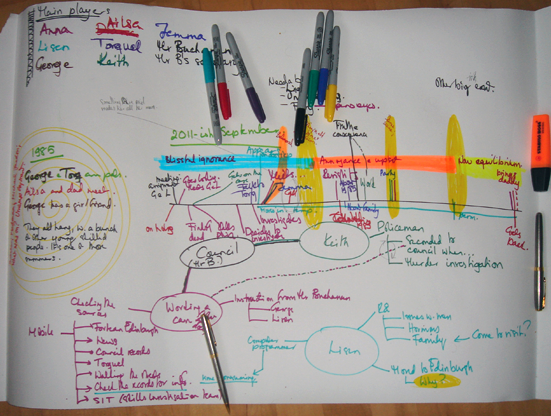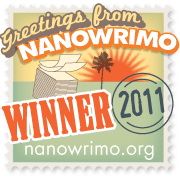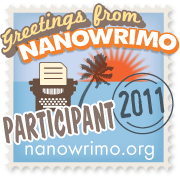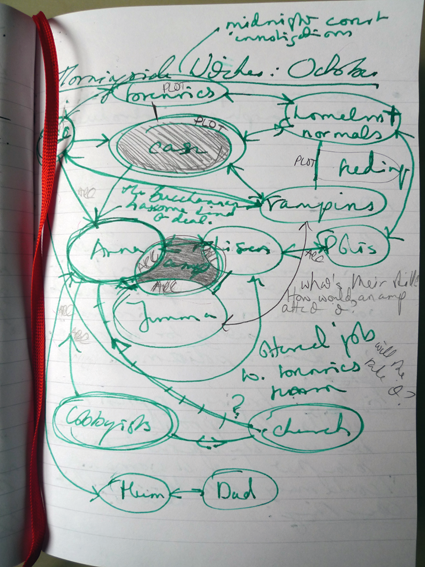OK. This is it. It is June and that was when I was going to start writing.
Plotting started in April and took a frantic turn in May. There’s still some research I need to do and a couple of character studies that need a bit more of a polish (What really drives Anna’s mum? I need to know!) but I’m in a position to start.
The starting line is an oddly scary place to be.
I’ve only just put fingertip to keyboard but I can already tell you something about the difference between NaNoWriMo and doing it for real. When you do it for real, the pressure is on. I can feel myself reining myself in even before I’ve started. The writing of this novel isn’t just about having fun but rather about creating something that I can share with the world. This is not high literature, that’s not where I’m going – not with this one – but at the end I want something that I’m not embarrassed to ask people to read. After all, the point is to share it, as widely as possible.
Here goes.


 This week I made a number of important changes. Not to the plot, as such, but to how I work.
This week I made a number of important changes. Not to the plot, as such, but to how I work.